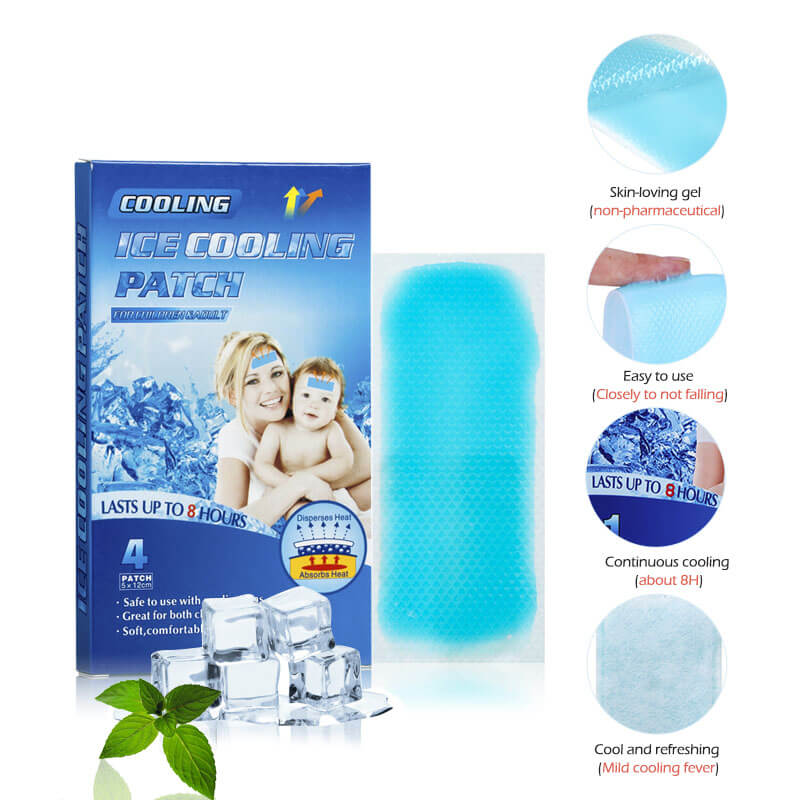Author:Kangdi 22-08-2024
Cooling patch factories have emerged as essential players in the modern healthcare and wellness industry. These specialized manufacturing facilities are dedicated to producing innovative solutions for temperature management, pain relief, and comfort enhancement. As the demand for non-pharmaceutical cooling products continues to rise, these factories are at the forefront of developing and producing cutting-edge cooling patches for various applications.
The production process in a cooling patch factory is a complex blend of chemistry, materials science, and advanced manufacturing techniques. The core of their operation revolves around creating patches that can deliver a cooling sensation to the skin for extended periods. This involves careful selection and combination of ingredients such as menthol, camphor, and various hydrogels that form the basis of the cooling effect.
One of the key challenges for cooling patch factories is achieving the right balance between effectiveness and safety. The cooling agents used must be potent enough to provide noticeable relief but gentle enough to avoid skin irritation or other adverse reactions. This necessitates rigorous research and development efforts, often involving collaborations with dermatologists and other medical professionals.
The manufacturing process typically begins with the preparation of the cooling gel or solution. This mixture is carefully formulated to ensure consistent cooling properties and adherence to quality standards. Advanced mixing equipment and precise temperature control systems are employed to maintain the integrity of the ingredients throughout the production process.
Once the cooling solution is prepared, it is applied to a backing material, usually a thin, flexible fabric or plastic film. This application process requires specialized machinery capable of evenly distributing the gel across the backing material while maintaining a sterile environment. Many cooling patch factories utilize clean room technology to prevent contamination and ensure product purity.
After the cooling gel is applied, the patches undergo a curing process to set the gel and activate its properties. This may involve exposure to controlled temperatures or UV light, depending on the specific formulation. The patches are then cut to size and individually packaged to preserve their efficacy and extend shelf life.
Quality control is a critical aspect of cooling patch production. Factories implement stringent testing protocols at various stages of the manufacturing process. This includes checks for cooling intensity, duration of effect, adhesive properties, and overall patch integrity. Many facilities also conduct stability tests to ensure the patches maintain their effectiveness over time under various storage conditions.
Innovation is a driving force in cooling patch factories. Research teams continually explore new ingredients, formulations, and production techniques to enhance the performance of their products. This may involve developing patches with longer-lasting cooling effects, creating targeted solutions for specific medical conditions, or improving the eco-friendliness of their products and packaging.
As environmental concerns grow, many cooling patch factories are adopting more sustainable practices. This includes using biodegradable materials, implementing energy-efficient production processes, and exploring ways to reduce waste in packaging and distribution.
The global nature of the cooling patch market presents both opportunities and challenges for factories. While it allows for a broader customer base, it also requires navigating different regulatory environments and adapting products to suit diverse climates and consumer preferences.
In conclusion, cooling patch factories play a vital role in meeting the growing demand for non-invasive, drug-free cooling solutions. Through a combination of scientific expertise, advanced manufacturing capabilities, and a commitment to innovation, these facilities continue to push the boundaries of what's possible in personal cooling technology.
 0086 19937104978
0086 19937104978





